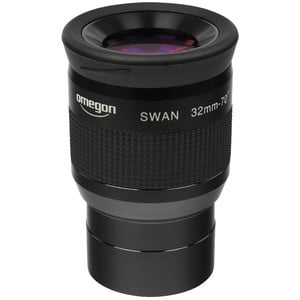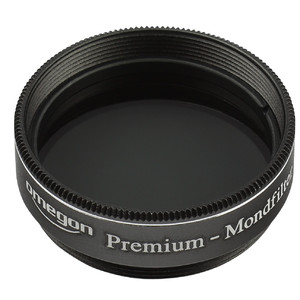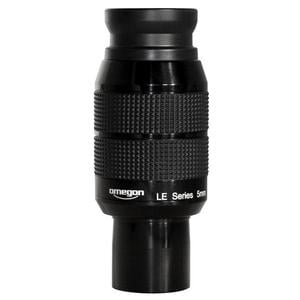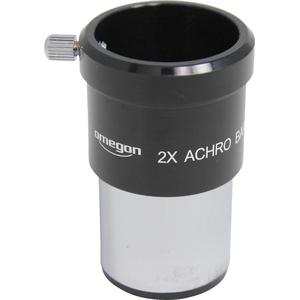Dobsonian telescopes are among the most practical instruments in astronomy. They are of simple construction and yet a brilliant idea. They essentially consist of two parts: firstly the optics, which in most cases is a solid tube or truss tube design; and secondly the mount, a wooden box (also called a 'rocker box') which sits on the ground and into which the telescope is inserted. This design allows you to begin observing sessions immediately without first having to spend time setting up and aligning a complicated mount. The basic idea of the Dobsonian design came from the wish to have a big telescope at a low price, a wish that has succeeded brilliantly. A true fan base has developed since the invention of the Dobsonian telescope which is dedicated to these instruments and their fascinating simplicity and to the idea of 'high performance at low price'.
Dobson telescopes are the most useful instruments in the astronomy.
Their construction is rather simple but genuine. In general, they consist of two main parts. The first one is the optics, the second is the mount which consists of a wooden box on the floor which allows the optical tube assembly to pivot in altitude, while the box itself is swivelled on a base in azimuth. You just have to insert the tube and you can immediately start your observation and don´t have to install and focus the mount first.
The basic idea concerning the construction of a Dobson telescope was that a large telescope optics should be available for low budget. And this was successful! Since the invention of the Dobson telescope, the fan club has been growing and growing. Those people are fascinated by these instruments and their fascinating simplicity. Motto: Real Power for low budget!
The optics of this Dobson has a diameter of 25cm (8") and a focal length of 1200mm. Thus, the aperture ratio of 1:4.8 is reached. An optics like this provides a very strong light collecting ability (1275x). When the sky is rather dark, you can observe stars of marginal sizes of 14mag. Especially in case of apertures of 250mm, you can get best results for Deep Sky objects, which is not really possible with smaller telescopes. The secondary mirror rods are very thin and thus, the diffraction rate is very low. The optics` obstruction is about 25% because of the secondary mirror´s diameter (about 50 mm).
The rocker box the telescope is mounted on is easy to handle. The telescope can thus be moved easily and with only a few fingers in azimuth and height The telescope can be moved with floating and pivot bearing.The optics stays stable in every position to allow a beautiful and undisturbed sky observation.Even if you want to magnify intensely, the observation will be pure fun!
With the new Tension Control System, you can adjust easily on the rocker box if the optics should be rough-running or smooth-running. Consequently, you always have the fitting resistance.
The 2" eye piece pullout is smooth-running and equipped with a reduction jacket of 1,25".
By the help of the 9x50mm finder scope with a fine reticule , it´s easy to find even faint objects.
The new parabolic reflectors of this DOBSON-PX range are made of Pyrex. The Pyrex reflector bracket is not as vast as for example the common BK7 glass material. The dimension of BK7 is about 2x larger than with a Pyrex. This mirror can not easily be drafted. Thus, it remains in its geometric form even during the cooling time, and this is the difference to a reflector made of BK7 glass. Because of this, the mirror provides a better reproduction efficiency in the cooling down phase. Moreover, Pyrex can be parabolised much easier. However, this mirror doesn´t cool down in a shorter period of time than other mirror products.
The mirrors are 75nm p.t.v. minimum or even better. Thus, the requirement for high definition and precision, Lamda/8, is fulfilled.
Dobson Telescopes are equipped with a Strehl value of 0,8 or higher. This tells us about the optical efficiency and power of this telescope: If 80% of the light unite in the telescope´s diffraction slices, astronomers call this a "diffraction limited optics". This means that the resolution of a telescope is only limited by the light´s diffraction. As this chiffre can not be 100%, the definition of the diffraction limit has been fixed on 0,8. Thus, you have a recommendable optics (other system related losses are not considered here)
This telescope has a Pyrex mirror. This type of glass exhibits much smaller thermal expansion than, for example, the commonly used BK7 glass - which is about 2X more than Pyrex. During the cooling phase, the mirror does not warp very much and so keeps its geometric shape much better than a BK7 mirror. So, as a result, the mirror offers better image quality during the cooling phase. Also, Pyrex is easier to figure into a parabola. However, it does not cool down any faster than other mirror materials. The mirror meets at least 75nm p.t.v. or better. So the well-known precision condition Lambda/8 is more than satisfied. The telescopes have a Strehl Ratio of 0.8 or higher. This value expresses something of the optical performance and therefore the quality of the figured surfaces. When theoretically 80% of the light is incorporated in the Airy disk of the telescope image, the optics are described as 'diffraction limited'. That means that the resolution of a telescope is only limited by the diffraction of light. As it is not possible for this to be 100%, the definition of the diffraction limit has been set at 0.8. This always means that you have excellent optics (other systemic losses are not included here).
The 2" focuser is smooth and comes provided with a 1.25" reducer. The finder scope has a fine crosshair, allowing easy location of even the somewhat fainter objects.
The Skywatcher rocker box is very easy to use. The telescope can be pointed in azimuth and altitude easily and smoothly by using only a couple of fingers. The telescope moves on slide and pivot bearings. It remains stable in any position, allowing highly enjoyable observing. And observing still remains a joy even at higher magnifications. The Tension Control System also lets you easily adjust the friction setting and so the amount of resistance when moving the optics on the rocker box. This allows you to always have the appropriate resistance set.
It not only matters which telescope you buy but also where you buy it. Our additional services:
- We are a leading telescope dealer and know the devices we sell. Our customer service team will gladly help you after your purchase if you have problems with assembly or operation.
- We provide a copy of the 80-page Telescope ABC beginners handbook with every telescope.






